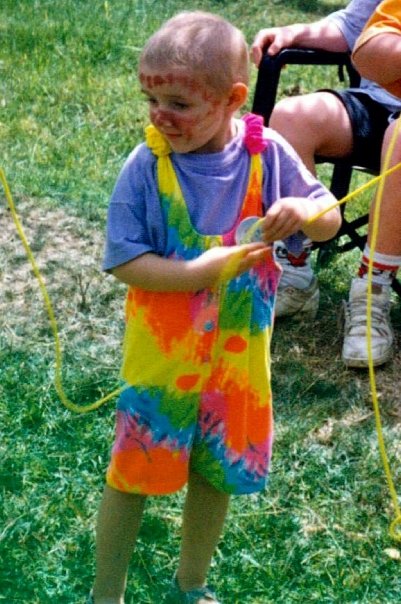Does childhood Leukemia progress quickly is a question that isn’t so easy to answer. One of the pressing concerns parents have upon receiving this diagnosis is how quickly the disease may progress. In this article we will explore the factors affecting progression. It really depends on a number of things, one of which is the type of Leukemia. The age of the child, whether there are any genetic factors that may affect the speed of which it progresses, the child’s response to the treatment, risk factors, and the number of leukemic cells left in the body after treatment.

But First Let’s Understand Childhood Leukemia For What it is.
Leukemia is a cancer that originates in the bone marrow, where blood cells are produced. In children, leukemia typically falls into two primary categories: acute lymphoblastic leukemia (ALL) and acute myeloid leukemia (AML). ALL is the most common type of childhood leukemia, accounting for about 75-80% of cases, while AML makes up the remaining cases. Either way, none are pleasant experiences and each carry their own forms of treatments. My experience is mainly in the realm of ALL, which is what my daughter was diagnosed with, but we did have friends in the hospital who had an AML diagnosis too.
The Progression of Childhood Leukemia
The progression of childhood leukemia can vary significantly from one patient to another. It is challenging to provide a one-size-fits-all answer to whether childhood leukemia progresses quickly because several factors influence the disease’s pace: I was basically told that the “acute” part of the name in ALL meant that it was a more rapid and aggressive Leukemia and that AML was slower in progress, but that may have changed since we were going through it because some sources say it is more aggressive. My memory of this time is not the best too, as there was so much stress surrounding the diagnosis and treatment that if it didn’t directly affect us, I didn’t pay as much attention.
Type of Leukemia: The two primary types of leukemia in children, acute lymphoblastic leukemia (ALL) and acute myeloid leukemia (AML), exhibit distinct characteristics in terms of progression. ALL is known for its rapid onset and progression and is where it gets the Acute part of it’s name from. It originates in the lymphocytes, a type of white blood cell, and can rapidly crowd out healthy blood cells. Conversely, AML is a more aggressive but less common form of childhood leukemia. It arises from abnormal myeloid cells in the bone marrow, and its progression can vary depending on the specific subtype.
Age at Diagnosis: Age is a critical factor influencing the pace of childhood leukemia. In general, younger children tend to respond better to treatment and have a higher cure rate. However, paradoxically, some types of leukemia, particularly infant leukemia, can progress more rapidly in very young children. This underscores the importance of early diagnosis and prompt treatment. In our case my daughter was only 3 and 3 quarter years of age at diagnosis and certainly had her issues during treatment. We had a few children pass away around us, of all ages, so I can’t really give a better indication of whether my daughter had a better chance of survival because it didn’t look like age made much of a difference while we were in the thick of it.

Cytogenetic Abnormalities: Cyto means cell so cytogenetic just means the genetic component of a cell. Leukemia cells often harbor genetic mutations and chromosomal abnormalities that can affect the disease’s behavior. Some genetic changes may make the leukemia cells more aggressive, leading to a faster progression. Conversely, certain abnormalities might result in a slower pace of advancement. Oncologists use sophisticated genetic testing to identify these alterations and tailor treatment plans accordingly.
Response to Treatment: The effectiveness of treatment is pivotal in determining how quickly childhood leukemia progresses. Standard treatment typically involves chemotherapy, radiation therapy, and sometimes stem cell transplantation. When leukemia cells respond well to these interventions, the progression of the disease can be slowed down or even stopped. However, resistance to treatment can result in a more aggressive course. I was told the aim of the first 4 weeks of intensive chemotherapy was to bring my daughter into remission, which basically meant that a lot of the Leukemic cells were supposed to be destroyed. After this the rest of the treatment stages were geared to continuing to destroy any Leukemic cells that were persistent and then to keep it away for a specified time afterwards. It usually takes about 5 years from a child entering remission for them to be declared to be in remission in the sense that the presence of any leukemic cells was being controlled by the body’s immune system. Our move into the full remission stage was delayed due to complications that arose from my daughter’s treatment.
Risk Stratification: To better guide treatment decisions, oncologists often use risk stratification. This process involves assessing various factors such as the child’s age, initial response to treatment, genetic abnormalities, and the presence of minimal residual disease (MRD). Based on these factors, patients are categorized into risk groups (low, intermediate, high) to determine the most appropriate treatment approach. High-risk cases may require more intensive and aggressive therapies to prevent rapid progression.
Minimal Residual Disease (MRD): MRD refers to the small number of leukemia cells that may remain in the body after initial treatment, even when the child appears to be in remission. Monitoring MRD levels is crucial because it can provide insights into the likelihood of relapse and the pace of disease progression. Regular MRD testing allows healthcare teams to adjust treatment plans as needed to maintain control over the disease. I’ve mentioned in a previous paragraph, a child takes about 5 years to be given the all clear and considered to be in a state of full remission. Regular blood tests will be done to keep on top of this and make sure there hasn’t been a relapse, which sadly, can still occur.
In Conclusion
I hope I have answered the question “Does childhood leukemia progress quickly”? in a way you can understand. It is a complex disease with a spectrum of progression rates. While some cases may exhibit a rapid course, others may progress more slowly. Understanding the influencing factors, including the type of leukemia, age at diagnosis, genetic characteristics, response to treatment, risk stratification, and MRD status, is essential for both healthcare providers and families. Collaboration between caregivers and medical professionals, early diagnosis, and tailored treatment plans are key elements in the fight against childhood leukemia. Make sure you are kept in the loop so you are aware of where your child is at for each stage of treatment. Ongoing research and advances in treatment options continue to improve outcomes for children with leukemia, offering hope for a brighter future in which this devastating disease can be more effectively managed and, in many cases, cured.
Thank you for reading and I wish you all the best in your journey forwards. If I can answer any questions please leave a comment below or you can reach out to me on my dedicated Facebook page.
Warm Wishes
Ange



